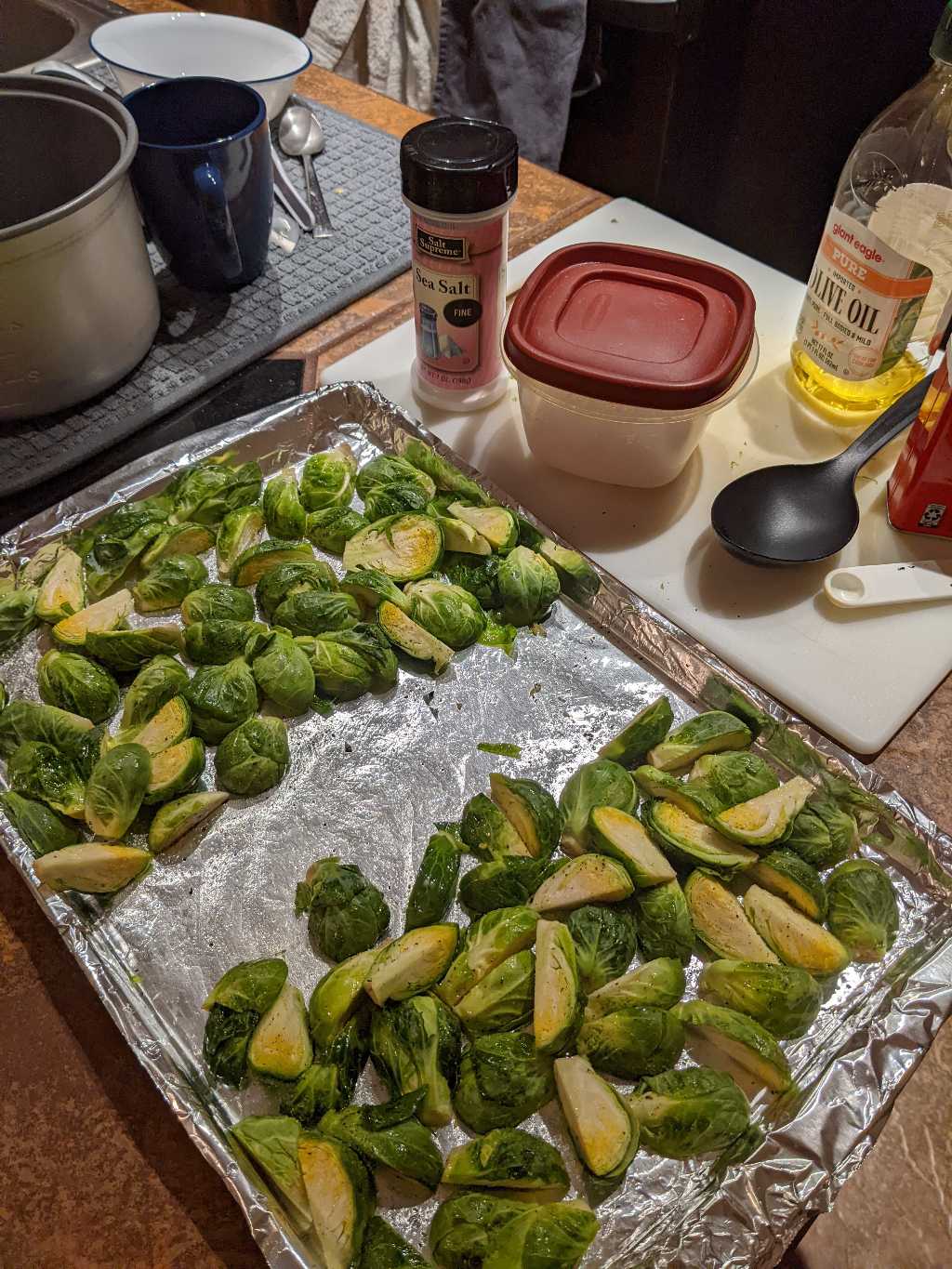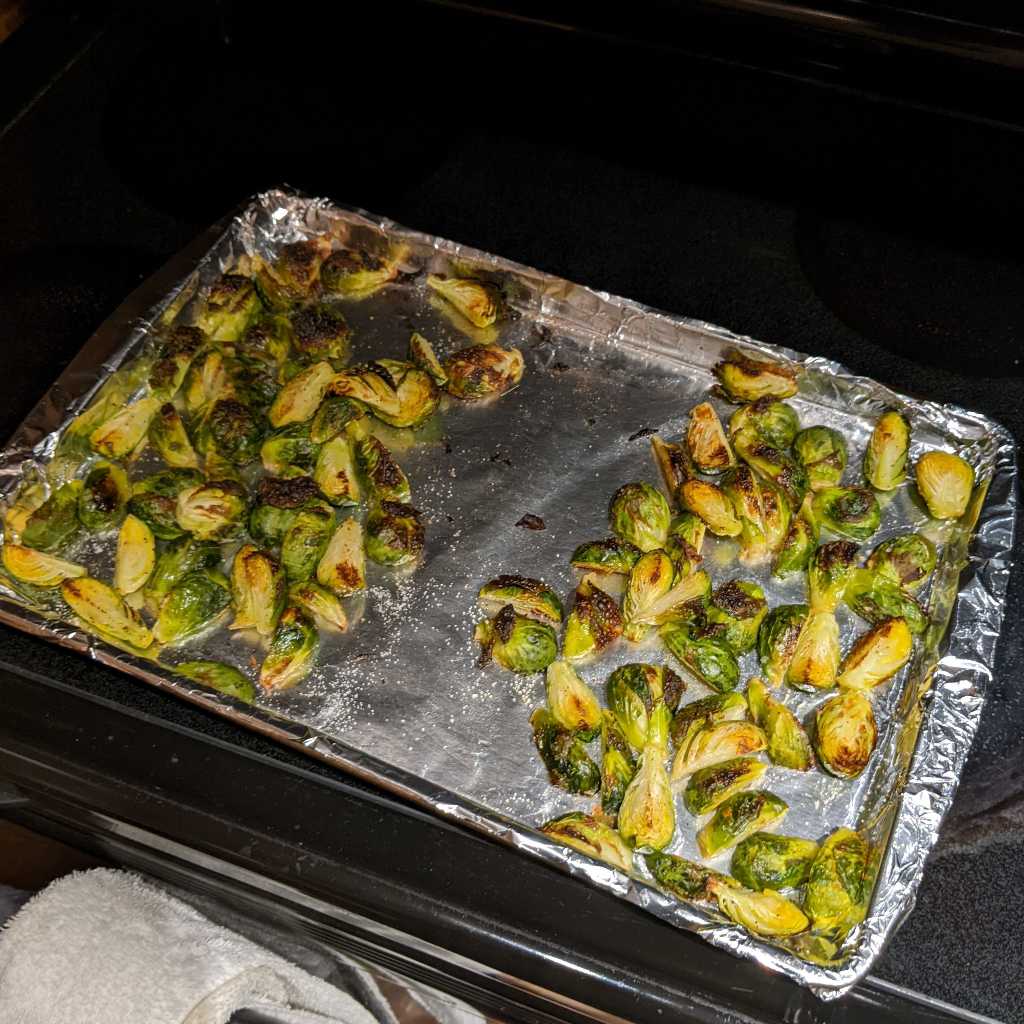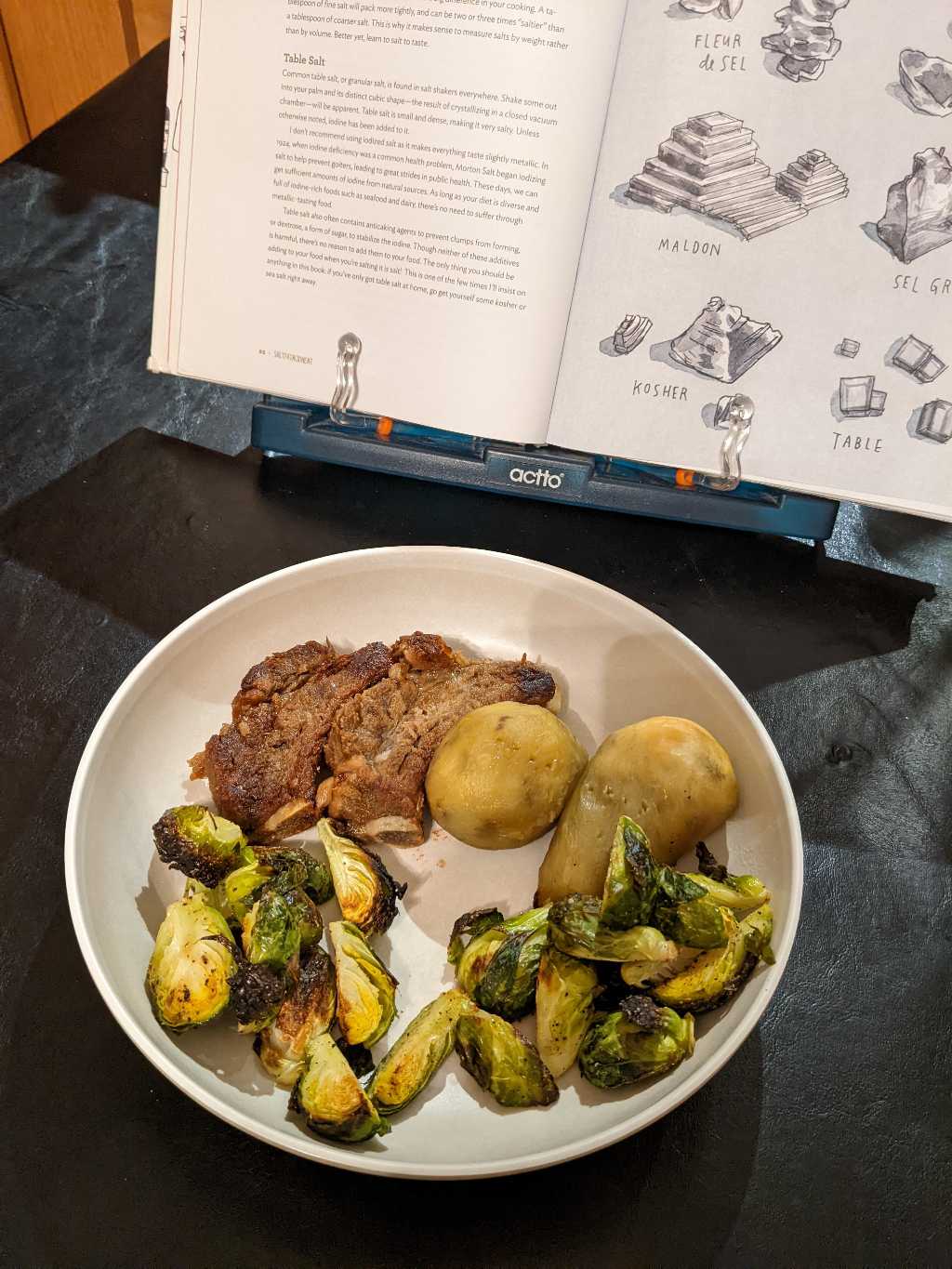Red curry with chicken
January 27, 2022 9:12 PM
Along with the cream of mushroom, my aunt also left me large container of curry (to eat) and a tiny container of red curry paste (to cook). I wanted something simple, so I searched Budget Bytes for a curry recipe and I decided to make Braised Thai Coconut Curry Chicken Thighs.
Budget Bytes isn't really the place I turn to for Asian recipes, but I still like her take on them. They aren't as flavorful as I want, so whenever her recipes call for soy sauce or fish sauce, I know I need to quadruple that amount.
The other thing I did to increase flavorful-ness was add salt to the chicken. Another tip I got from Salt Fat Acid Heat is to season your chicken with salt well in advance. I seasoned these chicken thighs with salt about 8 hours before cooking. I also added peas because I didn't think the dish had enough veggies in it as is.



I'm really happy with how this turned out! I thought the curry had a good amount of flavor with just the right amount of kick for me. And tossing green onions and cilantro on top right before serving adds a nice crunch to the dish.
"as salty as the sea"
January 22, 2022 8:52 PM
After I had read a few pages of Salt Fat Acid Heat, I told myself that I would try to read the whole thing once I got back to my apartment. That was May, and I waited til September to take the book out from the library, and after that it just sat on the shelf for month. (I'm really bad at returning library books in a timely manner. It takes me months, sometimes over a year.) But I finally started reading it again in earnest last week.
There is a lot of information in the book just about salt, but I figured the next place where I would try to incorporate another lesson is pasta. The author, Samin Nosrat, says this about boiling your pasta water:
season your cooking water as salty as the sea. [...] You might flinch upon seeing just how much salt this takes, but remember, most of the salt ends up going down the drain.
I filled up my pot with some water, started boiling it, threw two clumps of (table) salt in, and tasted a spoonful of the water. Not even close. I did this probably four or five more times, and wow this takes a lot of salt to get to what seems like "sea salt water". I'm not flinching because I'm worried about my salt intake, I'm just thinking about how much more salt I'll need to have on hand.
And now it has suddenly dawned on me how I kept running out of salt when my sister was staying with me.

Hey! I actually tasted the saltiness of the pasta! It was good! But yeah, this is a lot of salt. I think I'll keep trying to make properly salted pasta, but I'll stick to table salt in my cooking water.
I ended up making Creamy Chicken Fajita Pasta because I had a nub of cream cheese, along with a bell pepper and an onion sitting in my fridge. It was delicious. You can never go wrong with creamy pasta.
I might try and make a less saucy pasta next, one where the flavor in the pasta itself is much more apparent.

For now, I think I need to restock on salt again.
Sea salt
January 21, 2022 9:40 PM
Last summer I visited my sister, and as I was browsing her bookshelf, I saw the book Salt Fat Acid Heat. I had heard good things about this book, so I read a little of it. The first thing this book talks about in detail are the different types of salt: table salt, sea salt, kosher salt. The author also insists that you should use sea salt or kosher salt. Table salt has iodine and other ingredients that aren't salt and I guess it's better to have "pure" salt. So I told myself that when I ran out of salt, I'd get something other than table salt.
Anyway, I was at the grocery store last week and as I was replacing some of my other spices, I decided it was time to get salt. I bought a small container of "sea salt". I read the ingredients. There was only one: sea salt. Okay, seems legit.
The author recommends tasting the individual salt crystals to really get to know the salt. So I tasted it. Then I tasted the table salt. Then I tasted the sea salt again. 🤔 I could certainly tell the difference in texture, but I don't think my palate is refined enough to tell the difference in taste.
I had to try another taste test! I had some brussels sprouts that I wanted to roast, and I decided to sprinkle half of them with sea salt and half of them with table salt. And all with pepper because that makes them taste even better.


I cooked these at 425°F for about 15 minutes, and then I popped them under the broiler for about a minute and a half more. I thought I cooked them pretty well! But what about the salts? Honestly, I don't think I salted either side enough. They still tasted good, but I think I'll have to try again.

My aunt cooked those ribs and potatoes. I'm finally getting close to finishing all the food she gave me!
